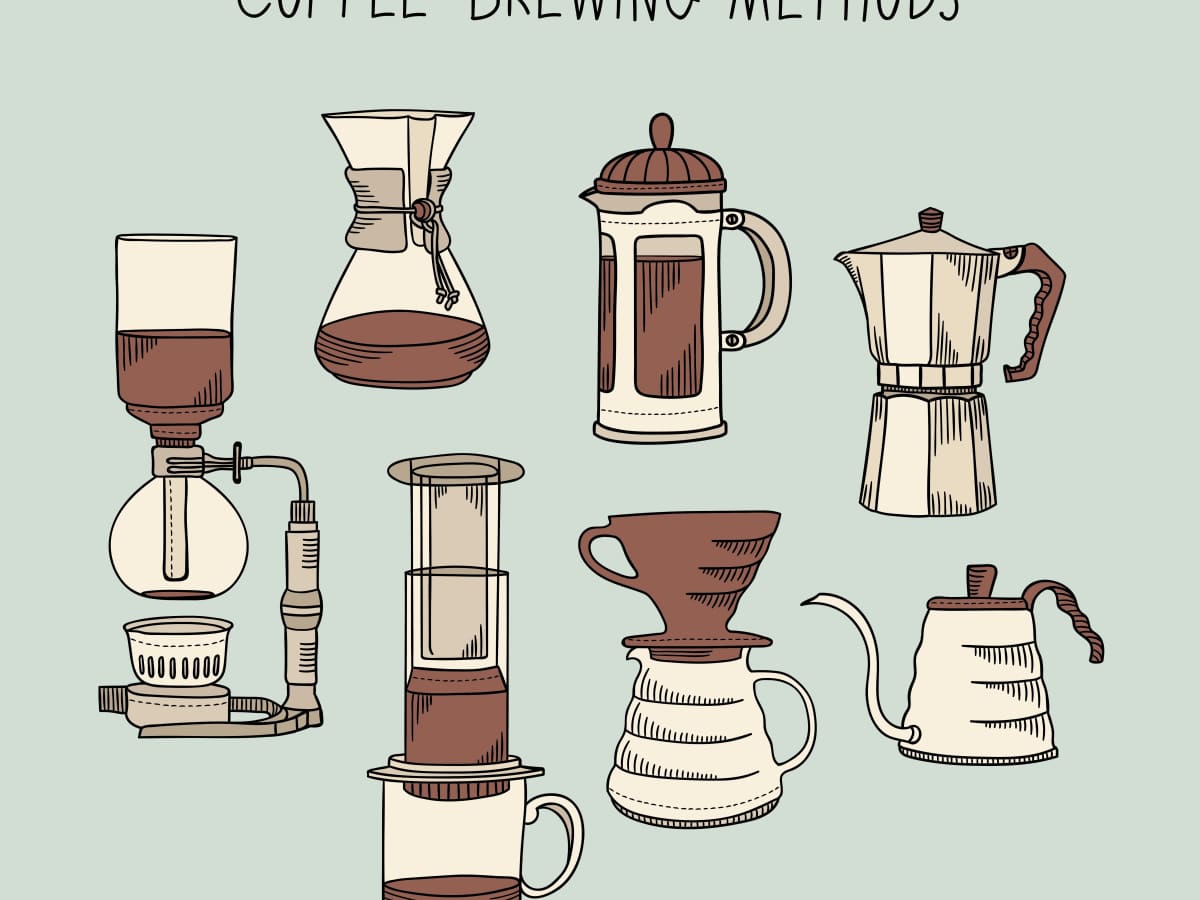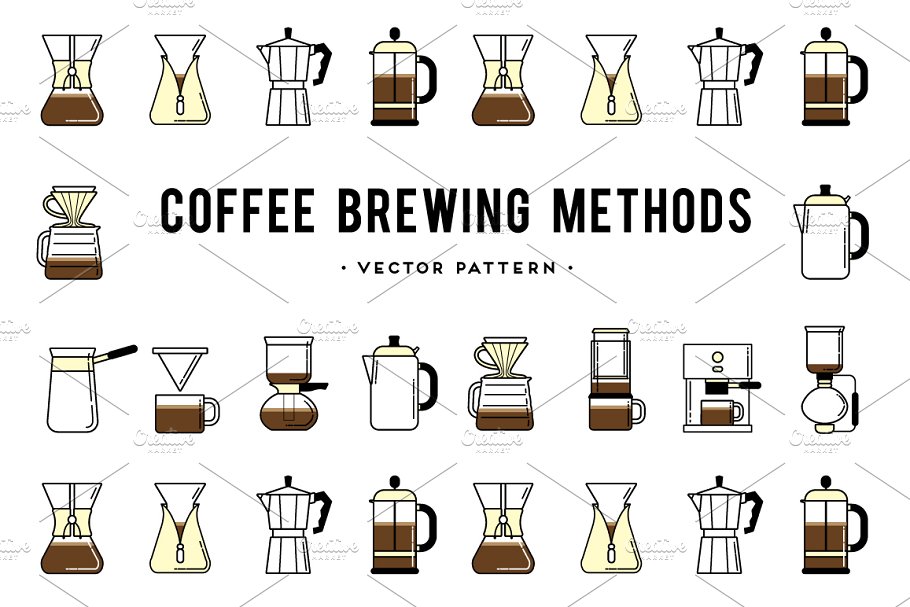A Comprehensive Overview to Different Coffee Brewing Methods You Must Try
A Comprehensive Overview to Different Coffee Brewing Methods You Must Try
Blog Article
The Science Behind Coffee Brewing: How Temperature and Time Affect Your Drink
Comprehending the science behind coffee brewing reveals that temperature and time are not mere variables however crucial elements that dictate the beverage's taste profile and total top quality. The optimum brewing temperature level commonly falls between 195 ° F and 205 ° F, while the period of removal varies dramatically across various methods. This interaction of aspects can result in a cup that is either wonderful or unsatisfactory. As we check out the subtleties of these aspects, the concern arises: exactly how can one efficiently equilibrium temperature level and time to accomplish that excellent mixture?
The Chemistry of Coffee Extraction
The chemistry of coffee removal looks into the detailed procedures that transform raw coffee beans right into the aromatic beverage delighted in worldwide. This transformation primarily involves the solubility of numerous substances existing in the beans, which are influenced by factors such as work dimension, water quality, and the developing method utilized.
During the brewing process, warm water acts as a solvent, drawing out soluble substances, consisting of high levels of caffeine, sugars, lipids, and acids, from the coffee premises. Each compound adds to the taste profile, scent, and body of the final beverage. Acids are responsible for appetizing and brilliant notes, while oils add to an abundant mouthfeel.
The preliminary stages of brewing extract acids and sugars, leading to a pleasurable level of acidity, while long term extraction can lead to anger due to over-extraction of undesirable compounds. Recognizing these chemical communications is crucial for enhancing developing techniques, as the equilibrium between extraction time and water temperature level can considerably influence the total top quality of the coffee.
Suitable Developing Temperatures
Finding the ideal developing temperature level is important for opening the complete potential of coffee flavors and aromas - coffee brewing methods. Research suggests that the ideal array for developing coffee lies in between 195 ° F to 205 ° F(90 ° C to 96 ° C) Within this variety, the extraction procedure efficiently liquifies the desirable soluble compounds in coffee beans, causing a delicious and well balanced cup
Brewing at reduced temperatures, such as listed below 195 ° F(90 ° C ), might result in under-extraction, generating a weak and acidic mixture with muted flavors. On the other hand, developing at temperatures surpassing 205 ° F(96 ° C) can bring about over-extraction, producing a bitter and severe taste due to the extreme dissolution of unfavorable compounds, such as tannins.
Additionally, the perfect brewing temperature level can vary depending upon the coffee bean type and roast level. Lighter roasts usually profit from slightly greater temperatures to boost their intricate flavor profiles, while darker roasts may be much better matched to lower temperatures to alleviate resentment.
Eventually, maintaining accuracy in brewing temperature levels is critical for achieving an unified equilibrium of tastes, making sure that every mug of coffee delivers a satisfying sensory experience.
Impact of Brewing Time
Developing time plays a crucial duty in identifying the taste account and overall top quality of coffee. Much shorter developing times can result in under-extraction, leading to a weak or sour taste, as not sufficient soluble substances are liquified.
Optimal brewing time varies depending on the method made use of and the work size of the coffee. A French press usually needs concerning 4 minutes, while coffee extraction is usually finished within 25 to 30 seconds. It is important to calibrate developing time in conjunction with various other variables, such as water temperature level and coffee-to-water ratio, to achieve the wanted taste profile.
Understanding the effect of developing time makes it possible for coffee lovers to refine their developing techniques, eventually improving the sensory experience of their mug (coffee brewing methods). With careful focus to this variable, one can open the complete capacity of the coffee, disclosing its special features and nuances
Brewing Techniques and Their Results

As an example, methods like French press and cold brew permit a longer steeping time, resulting in a fuller body and robust taste because of raised removal of oils and soluble solids. Alternatively, coffee brewing makes use of high pressure and a much shorter removal time, creating a focused shot that highlights intense flavors and an additional hints abundant crema.
Pour-over strategies, such as Chemex or V60, provide an even more controlled removal process, allowing the maker to adjust circulation rate and water circulation, which can improve brightness and clearness. Percolation methods cycle water via the coffee premises multiple times, leading to a more powerful, frequently bitter taste.
Last but not least, using paper filters versus metal filters can also impact the final preference; paper filters generally yield a cleaner cup by trapping oils and fine fragments, while steel filters allow more oils to go through, adding to a fuller mouthfeel - coffee brewing methods. Recognizing these nuances can elevate the coffee experience substantially
Tips for Perfecting Your Mixture
A well-executed brew can change even the simplest coffee into a remarkable experience. To attain this, attention to detail is crucial. Begin with high-quality, fresh roasted beans, as their taste profile lessens in time. Grind the beans simply prior to brewing to take full advantage of quality, making sure the grind size matches your brewing approach-- coarser for French press and finer for espresso.
Water top quality plays an important role; use filtered water devoid of impurities. The excellent developing temperature varies between 195 ° F and 205 ° F(90 ° C to 96 ° C ) Too hot can burn the coffee, while as well cool may under-extract flavors.
Timing is equally essential. For immersion methods, steeping for three to 5 mins is optimum, whereas drip methods generally take around five minutes. Explore mixture times to discover your recommended stamina.

Verdict
In summary, the elaborate partnership in between temperature level and time is critical in the coffee brewing procedure. Adhering to optimum developing temperature levels between 195 ° F and 205 ° F, together with accurate timing customized to every method, ensures the wanted flavor profile is attained. Recognizing these scientific principles empowers individuals to improve their brewing strategies, eventually resulting in a more well balanced and delightful coffee experience. Mastery of these variables is necessary for any type of coffee lover seeking quality in their drink.
Comprehending the scientific research behind coffee brewing reveals that temperature level and time are not mere variables yet critical components that dictate the drink's flavor profile and general quality. Comprehending these chemical communications is essential for maximizing brewing methods, as the balance in between extraction time and water temperature can dramatically influence the total high quality of the coffee.Brewing time plays a pivotal function in wikipedia reference establishing the taste profile and total top quality of coffee. By concentrating on these elements-- bean top quality, grind size, water temperature level, soaking time, and ratio-- you check over here can raise your coffee developing procedure, resulting in a continually exceptional mug.
In recap, the complex relationship in between temperature and time is critical in the coffee developing procedure.
Report this page